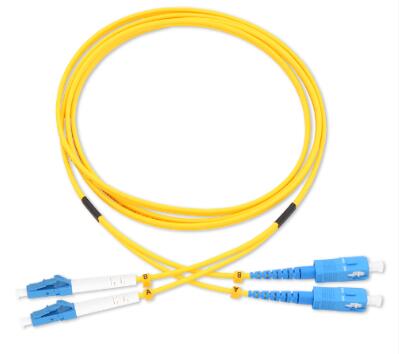By Echo | 05 March 2025 | 0 Comments
Is a Patch Cord the Same as an Ethernet Cable?
The terms "patch cord" and "Ethernet cable" are often used interchangeably, but they are not identical. While both serve as essential components in network connectivity, their distinctions lie in function and technological specifications. Understanding the difference is crucial, especially when dealing with fiber optics and high-performance networking environments.

A patch cord is a general term for a short cable used to connect electronic or optical devices within a network. It is designed for flexible and temporary connections, typically used in patch panels, networking racks, and telecommunications setups. Patch cords can be made from different materials, including copper and fiber optic, and come with various connector types depending on their application.
With the growing demand for faster and more reliable internet, fiber optic internet is rapidly replacing traditional copper-based Ethernet connections. Fiber optics offer significantly lower latency, greater data transfer speeds, and immunity to electromagnetic interference. This is why many enterprises and service providers are shifting towards fiber optic infrastructure, using high-quality fiber patch cords to ensure optimal network performance.
Companies like Rollball, a trusted manufacturer specializing in fiber optic communication products and accessories, provide top-tier fiber optical transceivers and patch cords at competitive prices. Their products ensure seamless data transmission, making them an excellent choice for businesses upgrading to high-speed networking.
What Defines a Patch Cord?

A patch cord is a general term for a short cable used to connect electronic or optical devices within a network. It is designed for flexible and temporary connections, typically used in patch panels, networking racks, and telecommunications setups. Patch cords can be made from different materials, including copper and fiber optic, and come with various connector types depending on their application.
Fiber Cord and Fiber Optic Patch Cable in Networking
Unlike standard copper-based Ethernet cables, a fiber optic patch cable is specifically designed for high-speed data transmission over long distances. It consists of fiber optic strands that transmit data using light instead of electrical signals, reducing interference and signal loss. Fiber cords play a critical role in fiber optic internet, offering higher bandwidth and superior reliability compared to traditional copper wiring.What Makes an Ethernet Cable Different?
An Ethernet cable follows specific standards set by the IEEE for wired networking. It typically consists of twisted-pair copper conductors and is primarily used for Ethernet-based networks, such as home and office internet connections. Ethernet cables commonly feature RJ45 connectors and are categorized based on their performance capabilities, including Cat5e, Cat6, Cat6a, and higher.Can an Ethernet Cable Be a Patch Cord?
Yes, an Ethernet cable can function as a patch cord if it is short and used to connect network devices temporarily. However, not all patch cords are Ethernet cables. Patch cords exist for a variety of applications, including:- Fiber optic patch cords – Used in fiber optic networks with LC, SC, or MPO connectors.
- Audio patch cords – Used in sound systems with RCA, 1/4-inch, or XLR connectors.
- Telecommunication patch cords – Used to connect telecom equipment within data centers.
The Role of Fiber Optics in Modern Networks

With the growing demand for faster and more reliable internet, fiber optic internet is rapidly replacing traditional copper-based Ethernet connections. Fiber optics offer significantly lower latency, greater data transfer speeds, and immunity to electromagnetic interference. This is why many enterprises and service providers are shifting towards fiber optic infrastructure, using high-quality fiber patch cords to ensure optimal network performance.
Choosing the Right Patch Cable for Your Needs
When selecting a patch cord, it is important to consider the specific network requirements. High-performance fiber optic networking solutions, especially those involving fiber optics, require high-quality components to maintain signal integrity and minimize data loss.Companies like Rollball, a trusted manufacturer specializing in fiber optic communication products and accessories, provide top-tier fiber optical transceivers and patch cords at competitive prices. Their products ensure seamless data transmission, making them an excellent choice for businesses upgrading to high-speed networking.
The Wider World of Patch Cables
While an Ethernet cable can be a type of patch cord, the term patch cord covers a broader range of networking cables, including fiber optic patch cables used in fiber optic internet and telecommunications. Understanding these distinctions is essential when designing and maintaining modern network infrastructures, ensuring the right cabling solutions are used for maximum efficiency and performance.Leave a Reply
Your email address will not be published.Required fields are marked. *